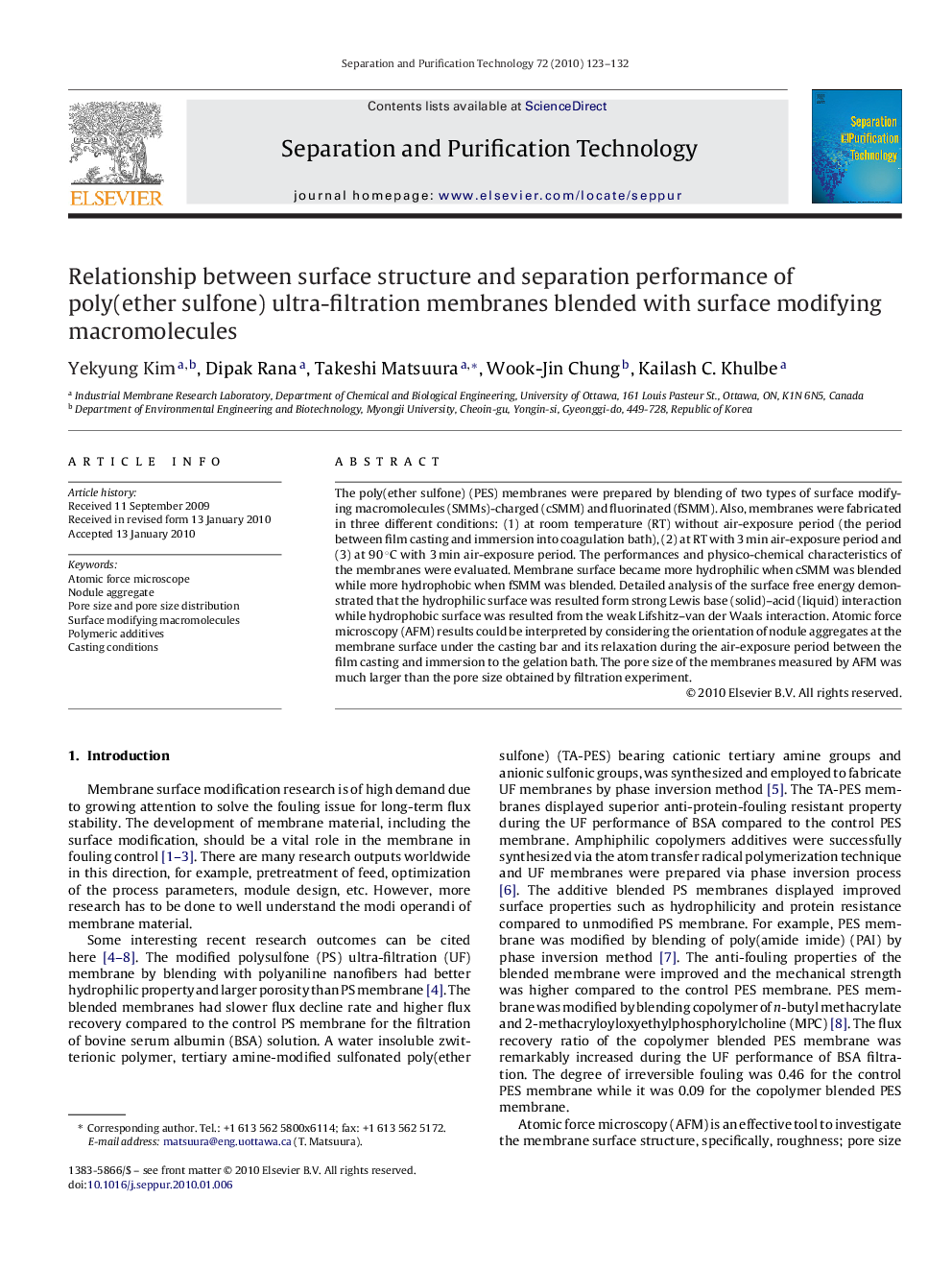| Article ID | Journal | Published Year | Pages | File Type |
|---|---|---|---|---|
| 642796 | Separation and Purification Technology | 2010 | 10 Pages |
Abstract
The poly(ether sulfone) (PES) membranes were prepared by blending of two types of surface modifying macromolecules (SMMs)-charged (cSMM) and fluorinated (fSMM). Also, membranes were fabricated in three different conditions: (1) at room temperature (RT) without air-exposure period (the period between film casting and immersion into coagulation bath), (2) at RT with 3 min air-exposure period and (3) at 90 °C with 3 min air-exposure period. The performances and physico-chemical characteristics of the membranes were evaluated. Membrane surface became more hydrophilic when cSMM was blended while more hydrophobic when fSMM was blended. Detailed analysis of the surface free energy demonstrated that the hydrophilic surface was resulted form strong Lewis base (solid)-acid (liquid) interaction while hydrophobic surface was resulted from the weak Lifshitz-van der Waals interaction. Atomic force microscopy (AFM) results could be interpreted by considering the orientation of nodule aggregates at the membrane surface under the casting bar and its relaxation during the air-exposure period between the film casting and immersion to the gelation bath. The pore size of the membranes measured by AFM was much larger than the pore size obtained by filtration experiment.
Keywords
Related Topics
Physical Sciences and Engineering
Chemical Engineering
Filtration and Separation
Authors
Yekyung Kim, Dipak Rana, Takeshi Matsuura, Wook-Jin Chung, Kailash C. Khulbe,
